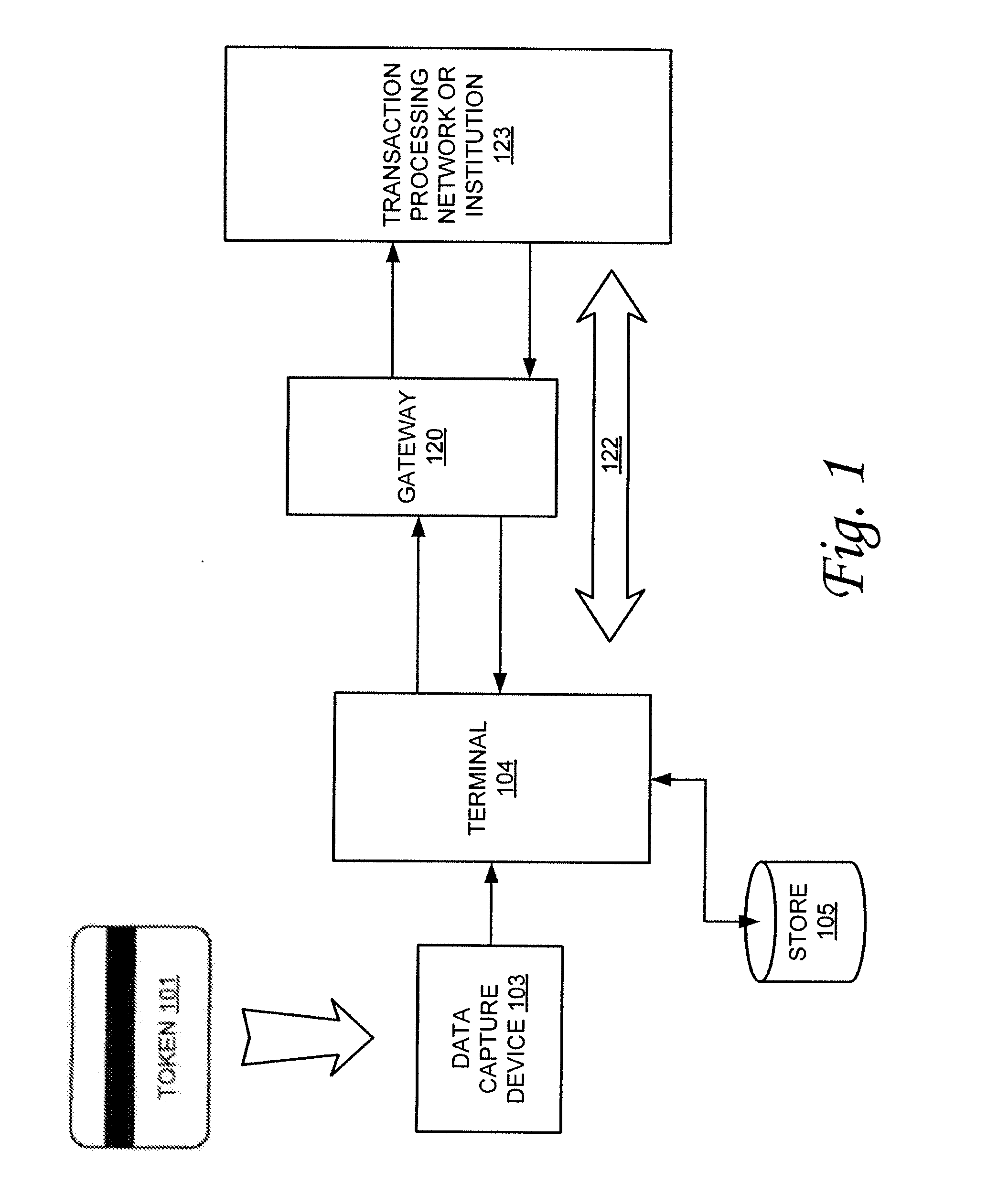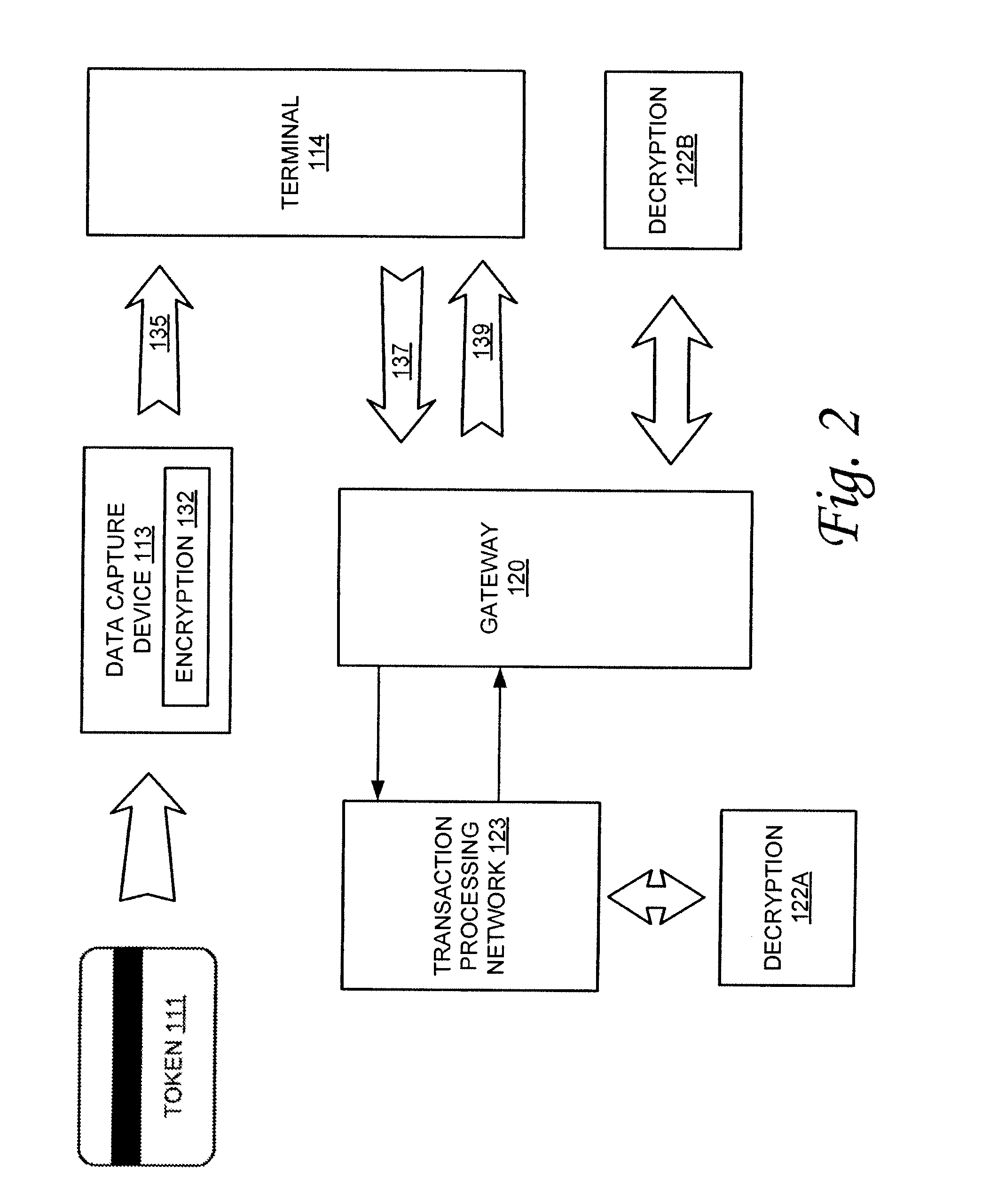Variable-length cipher system and method
- Summary
- Abstract
- Description
- Claims
- Application Information
AI Technical Summary
Benefits of technology
Problems solved by technology
Method used
Image
Examples
example 1
Credit Card Numbers
[0172]In this example, the inputs are strings over —={0, 1, . . . , 9} where length can vary, say from 4 to 20. This is because one might want to encrypt varying amounts of the credit card numbers and discretionary data, leaving the rest in place. For example, the BIN or last four might be left in clear text, as might the cardholder's name. The output must be a string over _* of the same length as the input. (Note this example ignores the functioning of the Luhn digit). Tweaks would be some of the (un-encrypted) credit card number digits encoded into bit strings in a natural way. This can be captured by setting by letting Domcc()=_ for all ∈ I={4, . . . , 20}. We seek a general cipher GEcc=(E,KeySp,TwSp,I,Domcc), and use the ability to have a domain with multiple sets in a crucial way to capture the length-preservation requirement. GEcc is constructed using encode-then-encipher with the enciphering via general cipher GE. Let s()=10 for I. Thus the indexes are ju...
example 2
Multi-Alphabet Strings
[0173]This example constructs a general cipher for multi-alphabet strings. A multialphabet string is a sequence of digits pk . . . p1 where pi ∈_i for 1≦i≦k and alphabets _k, . . . 1. The index set for the cipher is any sequence of (uniquely encoded descriptions of) alphabets, e.g. _k_k−1 . . . 1 for any alphabets _k for any k>1. To any alphabet _, associate an injective map num_: —→[0 . . . |—|−1]. Its inverse is denoted via char_. Next a general cipher is constructed as GEmas=(˜E,KeySp,TwSp,I,Dommas) that inherits the key space and tweak space of the underlying general cipher GE, has index set I specifying the space of arbitrary string formats (the sequence of alphabets digits are taken from), and Dommas that maps an index to a set Zs(). Next the encode-then-encipher paradigm is used with encoding and decoding functions as given as follows:
[0174]Enc(, P)
[0175]Parse t as _k, . . . ,—1
[0176]Parse P as pk, . . . , p1 where pi ∈ _i
[0177]x←num—1 (p1)+Pk
[0178]i=2 “...
example 3
Multi-Field Records
[0186]This example is provided in terms of the example above, where a name, address and credit card number are enciphered. The goal is to have a format-preserving encryption that maps input plaintext Name, Addr, CC to output ciphertext Name*, Addr*, CC*. Name and Name* must consist of two strings of letters, each being an upper case letter followed by lower case letters. Addr and Addr* must be alphanumeric characters, spaces, or commas followed by a valid postal code. CC and CC* must be 8-19 decimal digits followed by a valid Luhn digit. These formats can be handled by interpreting a record as a multi-alphabet string and using GEmas. All that is needed is how to derive an index for a given record. Let _lc={a, . . . , z}, _uc={A, . . . ,Z}, _let=_lc ∪_uc, _num={0, . . . ,9}, and _α=—let ∪_num ∪{,} ∪{␣}. Let _ zip be the set of all valid (5-digit US) postal (ZIP) codes. Let _i cc be the set of all i-digit credit card numbers with valid check digit. That is _i cc={nk...
PUM
 Login to View More
Login to View More Abstract
Description
Claims
Application Information
 Login to View More
Login to View More - R&D
- Intellectual Property
- Life Sciences
- Materials
- Tech Scout
- Unparalleled Data Quality
- Higher Quality Content
- 60% Fewer Hallucinations
Browse by: Latest US Patents, China's latest patents, Technical Efficacy Thesaurus, Application Domain, Technology Topic, Popular Technical Reports.
© 2025 PatSnap. All rights reserved.Legal|Privacy policy|Modern Slavery Act Transparency Statement|Sitemap|About US| Contact US: help@patsnap.com



